#edward sherriff curtis
Text

Seven riders on horseback and a dog trek across Canyon de Chelly, Arizona. Photo by Edward S. Curtis, 1904.
Click Links at bottom of pictures to EMBIGGEN
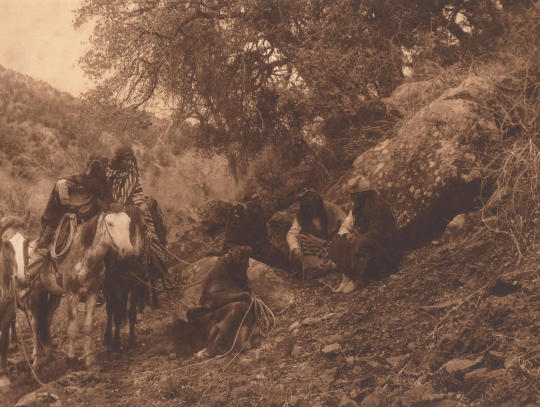
Edward S. Curtis - Story Telling - Apache, 1903

Edward S. Curtis - Navajo Woman and Two Children on Horseback, 1906

Edward S. Curtis - The Canyon, 1904
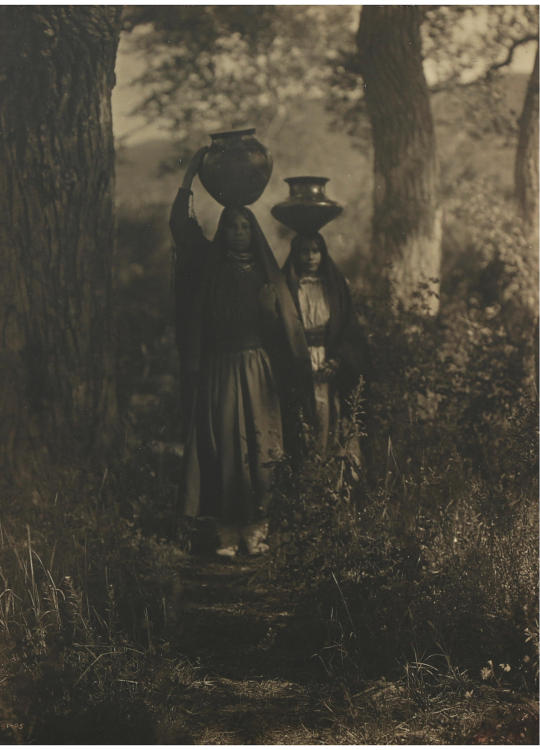
Edward S. Curtis - Taos Water Girls, 1905
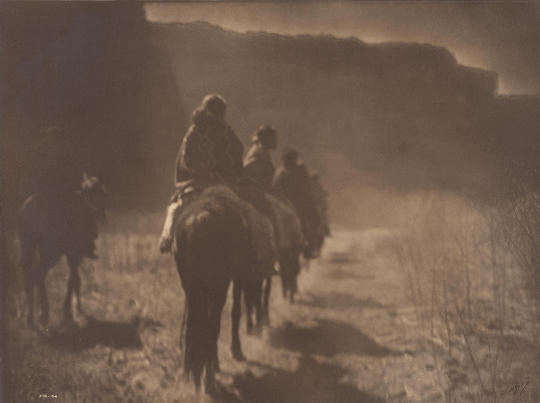
Edward S. Curtis - The Vanishing Race, Navajo, 1904

Geronimo – Apache, 1905 - Edward S. Curtis

Edward S. Curtis ... Tells the Intimate Story of Indian Life with Motion Pictures.... Chicago: The National Printing and Engraving Co., c.1910. - Lithographic poster printed in 1910, when Curtis debuted his "picture opera," The Story of a Vanishing Race. The show included magic lantern slides of the photographer's work painstakingly hand-colored, supplemented by moving pictures, sound recordings of native songs, an orchestra, and Curtis's own narration.
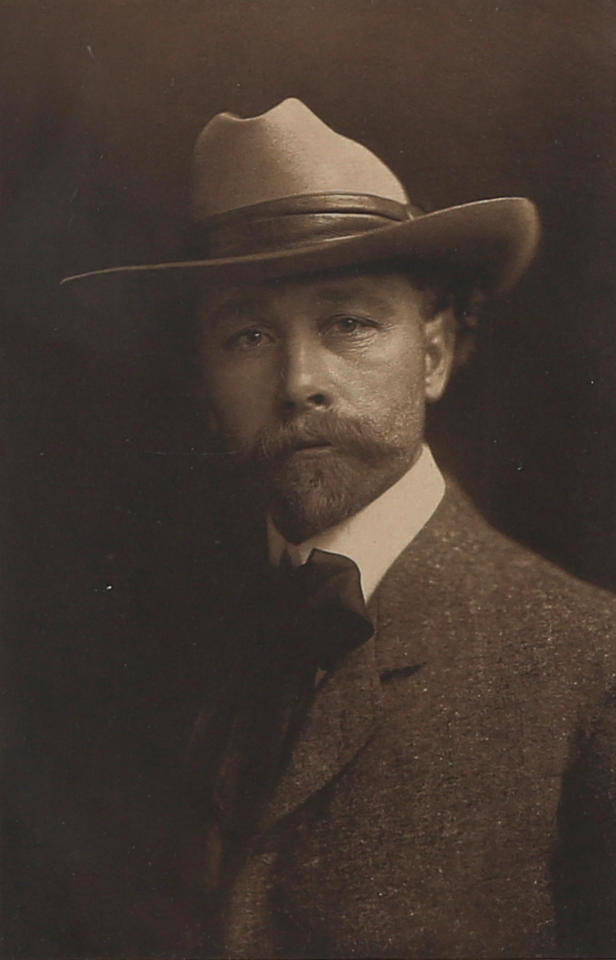
Portrait of Edward S. Curtis, 1907 - by: Adolph Muhr
Edward Sherriff Curtis (February 19, 1868 – October 19, 1952) was an American photographer and ethnologist whose work focused on the American West and on Native American people. Sometimes referred to as the "Shadow Catcher", Curtis traveled the United States to document and record the dwindling ways of life of various native tribes through photographs and audio recordings.
Curtis's goal was to document Native American life, pre-colonization. He wrote in the introduction to his first volume in 1907, "The information that is to be gathered … respecting the mode of life of one of the great races of mankind, must be collected at once or the opportunity will be lost." Curtis made over 10,000 wax cylinder recordings of Native American language and music. He took over 40,000 photographic images of members of over 80 tribes. He recorded tribal lore and history, described traditional foods, housing, garments, recreation, ceremonies, and funeral customs. He wrote biographical sketches of tribal leaders.
#photogravure#edward s. curtis#historical photos#native americans#indigenous#navajo#apache#photagraphy#geronimo#ethnology#edward sherriff curtis#north american indian#the vanishing race
70 notes
·
View notes
Photo

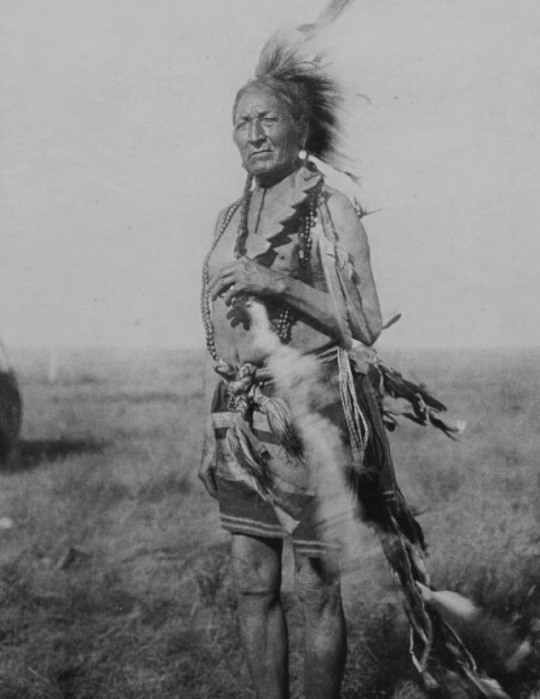








edward sherriff curtis (1868-1952) was an american photographer and ethnologist whose work focused on the american west and on native american people. curtis made over 10,000 wax cylinder recordings of native american language and music. he took over 40,000 photographic images of members of over 80 tribes. he recorded tribal lore and history, and he described traditional foods, housing, garments, recreation, ceremonies, and funeral customs. he wrote biographical sketches of tribal leaders.
171 notes
·
View notes
Text
Indianen geportretteerd door Edward S. Curtis
Indianen geportretteerd door Edward S. Curtis
Meer dan honderd jaar geleden begon de Amerikaanse fotograaf Edward Sherriff Curtis (Wisconsin, USA, 1868-1952) aan zijn grote zoektocht naar het oorspronkelijke gezicht van Amerika: in ruim dertig jaar maakte hij 40.000 fotoportretten van indianen behorend tot circa tachtig verschillende stammen die sinds tijden de westelijke streken van de rivier de Mississippi bevolken. Hij was ervan overtuigd…
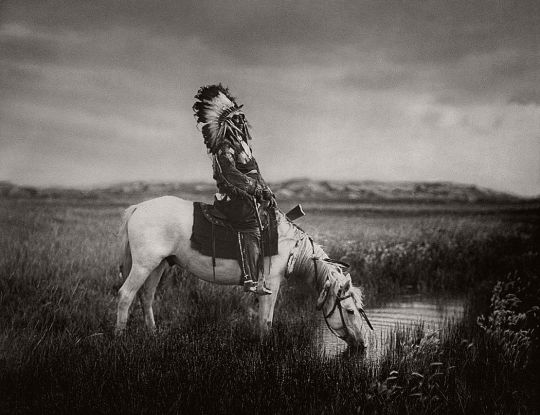
View On WordPress
#19-de en 20-ste eeuws#documenteren#fotograaf#gebruiken#Indianen#Mississippi#Native American#portret#sacred legacy#stammen#tradities#USA#westelijke streken#Wisconsin
0 notes
Text
Shared Photo Links (weekly) November 7, 2021
Shared Photo Links (weekly) November 7, 2021
Laurie Freitag Captures the Ephemeral Magic of Childhood
Emotional Photography: 5 Tips to Add Feeling to Your Photos
How Photos from the Battle of Antietam Revealed the American Civil War’s Horrors
See Edward Sherriff Curtis’ Photos of Indigenous Alaskan Culture
The Royal Photographic Society Unveils its 2021 Award Winners

View On WordPress
0 notes
Photo

IN MEMORY OS EDWARD S. CURTIS, WHO DIED OTD IN 1952
THE CLASSICS | AMERICAN HEROISM AT ITS FINEST
Miss Rosen for Crave Online
American photographer Edward S. Curtis embodies the essence of heroism in a single word: sacrifice. He staked everything he had to create one of the most significant bodies of work, The North American Indian, ever made and died in obscurity for all that he gave. Now the Muskegon Museum of Art, Michigan, presents Curtis’s full oeuvre—723 portfolio prints—for what may be the first time ever.
Recognized at the largest artistic collaboration and photographic achievement in the history of the medium, The North American Indian presents a body of work made between 1906 and 1930 documenting the indigenous peoples of the land at a time when they were being systematically wiped off the face of the earth by the United States government.
Read the Full Story at Crave Online
Photo: Edward Sherriff Curtis. The North American Indian. Portfolio 7, Plate 249. Kutenai Duck Hunter, 1910, Photogravure.
1 note
·
View note
Photo


PHOTOGRAPHER EDWARD S. CURTIS EMBODIED AMERICAN HEROISM AT ITS FINEST
Miss Rosen for Crave Online
American photographer Edward S. Curtis embodies the essence of heroism in a single word: sacrifice. He staked everything he had to create one of the most significant bodies of work, The North American Indian, ever made and died in obscurity for all that he gave. Now the Muskegon Museum of Art, Michigan, presents Curtis’s full oeuvre—723 portfolio prints—for what may be the first time ever.
Recognized at the largest artistic collaboration and photographic achievement in the history of the medium, The North American Indian presents a body of work made between 1906 and 1930 documenting the indigenous peoples of the land at a time when they were being systematically wiped off the face of the earth by the United States government.
The project, financed by J.P. Morgan, then the richest man in the world, was celebrated by The New York Herald as “The most gigantic undertaking since the making of the King James edition of the Bible.” In total, Curtis produced 20 volumes featuring a whopping 2,200 photogravures, that were sent to subscribers as they were published. Each portfolio contained 75 hand-pressed photogravures and 300 pages of text, which was accompanied by a corresponding portfolio containing at least 35 photogravures.
Read the Full Story at Crave Online
Top Photo: Edward Sherriff Curtis. The North American Indian. Portfolio 8, Plate 256. Chief Joseph – Nez Perce, 1909, Photogravure.
Bottom Photo: Edward Sherriff Curtis. The North American Indian. Portfolio 9, Plate 320. Lummi Type, 1899, Photogravure.
1 note
·
View note
Photo

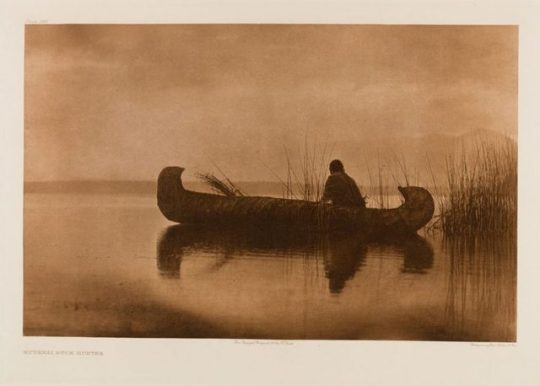
HONORING INDIGENOUS PEOPLE’S DAY !
THE CLASSICS | EDWARD S. CURTIS
Miss Rosen for Crave Online
American photographer Edward S. Curtis embodies the essence of heroism in a single word: sacrifice. He staked everything he had to create one of the most significant bodies of work, The North American Indian, ever made and died in obscurity for all that he gave. Now the Muskegon Museum of Art, Michigan, presents Curtis’s full oeuvre—723 portfolio prints—for what may be the first time ever.
Recognized at the largest artistic collaboration and photographic achievement in the history of the medium, The North American Indian presents a body of work made between 1906 and 1930 documenting the indigenous peoples of the land at a time when they were being systematically wiped off the face of the earth by the United States government.
Read the Full Story at Crave Online
Top Photo: (l.) Edward Sherriff Curtis. The North American Indian. Portfolio 8, Plate 256. Chief Joseph – Nez Perce, 1909, Photogravure. (r.) Edward Sherriff Curtis. The North American Indian. Portfolio 9, Plate 320. Lummi Type, 1899, Photogravure.
Bottom Photo: Edward Sherriff Curtis. The North American Indian. Portfolio 7, Plate 249. Kutenai Duck Hunter, 1910, Photogravure.
0 notes